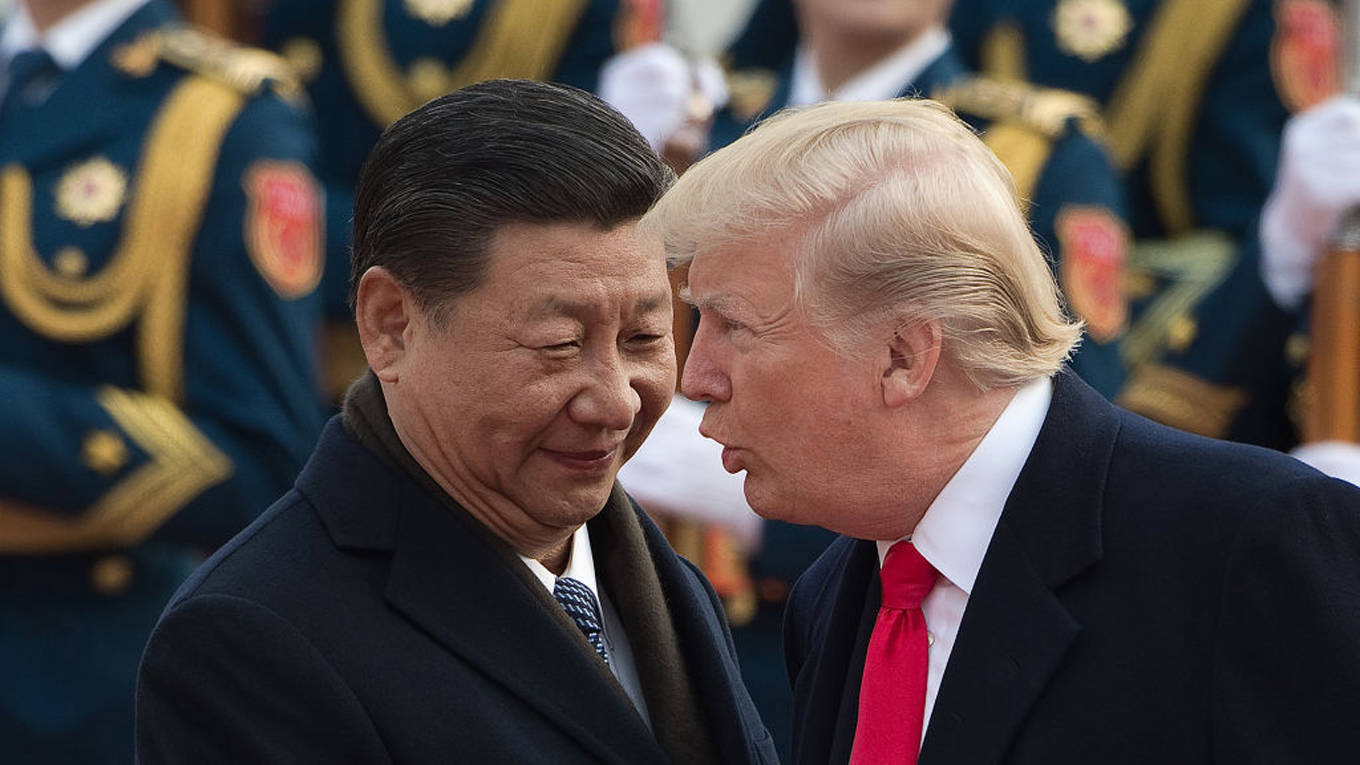MARTIN FELDSTEIN
 Chinese negotiators recently offered to buy enough American products to reduce the bilateral trade deficit to zero by 2024. Why, then, have US negotiators rejected that as a way to end the dispute?
Chinese negotiators recently offered to buy enough American products to reduce the bilateral trade deficit to zero by 2024. Why, then, have US negotiators rejected that as a way to end the dispute?
CAMBRIDGE – The current conflict between the United States and China is not a trade war. Although the US has a large trade deficit with China, that is not the reason why it is imposing high tariffs on imports from China and threatening to increase them further after the end of the current 90-day truce on March 1. The purpose of those tariffs is to induce China to end its policy of stealing US technology.
The Chinese government refers to the conflict as a trade war because it hopes that buying large quantities of American products will lead the US to end its tariffs. The Chinese negotiators have recently offered to buy enough US products to reduce the trade deficit to zero by 2024. Tellingly, the US negotiators have rejected that as a way to end the dispute.
The US wants China to stop requiring American firms that seek to do business in China to have a Chinese partner and to share their technology with that partner. That policy is explicitly forbidden by World Trade Organization rules, which China has been obliged to respect since they joined the WTO in 2001. The Chinese deny that they are violating that rule, arguing that US firms are not being forced to share technology: they do so voluntarily in order to have access to the Chinese market and to Chinese production opportunities. But American firms regard China’s behavior as a form of extortion.2
The US also wants China to stop using cyber espionage to steal technology and other industrial secrets from American companies. Chinese President Xi Jinping agreed to end such digital theft of US industrial technology after he met with President Barack Obama in 2015. Unfortunately, the agreement reached at the time was very narrow, referring only to theft by both governments. Although the agreement did lead to a temporary reduction in cyber theft of industrial technology, cyber-attacks on US companies, possibly carried out by Chinese state-owned industries and other sophisticated organizations, have increased again in recent years.
The Chinese use the stolen technology to compete with US firms in China and in other parts of the world. The US Trade Representative recently estimated that this technology theft is costing the US economy $225-600 billion per year. And the FBI has asserted that the China’s cyber theft of American technology is the “most severe” threat to US national security.
Likewise, a lengthy 142-page report on the US-China conflict by the US Chamber of Commerce and the American Chamber of Commerce in China emphasized the problem of technology theft. The report made no reference at all to the trade balance.
That, no doubt, is because the authors understand the basic economic fact that the overall US global trade imbalance is the result of economic conditions in the US – the excess of investment over savings. If the Chinese bought enough US goods to eliminate the bilateral imbalance, the US imbalance would merely shift to other countries, without reducing the overall imbalance.
The US tariffs are clearly hurting the Chinese economy. The Chinese stock market is down substantially, and the Chinese economy is growing more slowly. Annual real (inflation-adjusted) GDP growth in the fourth quarter of 2018 was down to just 4%. The Chinese authorities are making statements signaling their eagerness to conclude an agreement with the US in order to stop the economic slowdown and reverse the decline in the Chinese stock market. The White House also makes positive statements about the negotiation, because doing so appears to boost the US stock market. But the reality is that there is no progress yet in dealing with the fundamental problem of technology theft.
The US government has no desire to stop China’s economic growth or the growth of its high-tech industries. But stealing technology is wrong. It has gone on for too long and should not be allowed to continue.1
The US is determined to stop it. If nothing is resolved by March 1, the US will raise the tariff on $200 billion of Chinese exports from 10% to 25%. That will hurt the Chinese economy further and cause the Chinese authorities to take the US demands more seriously – and to negotiate accordingly.
No comments:
Post a Comment